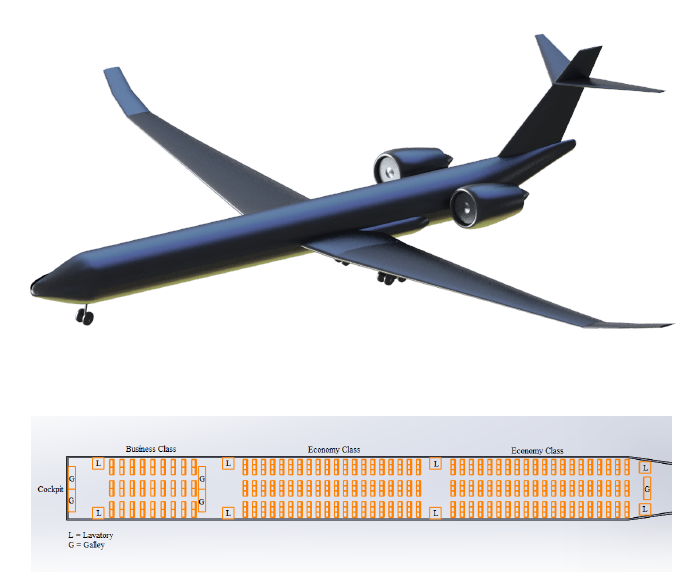Short Range High Capacity Aircraft Design - Undergraduate Capstone Project

Abstract
As international commerce matures, the need for efficient short range travel between various economic hubs is on the rise. The absence of a high capacity – short range transport jets is causing congestion problems at major airports around the world. This report includes a detailed design of a short-range high capacity aircraft as well as a post-design analysis in accordance with the research for proposal given by the American Institute of Aeronautics and Astronautics. The report includes the work of the AVIAVIS student design team at the University of California, Davis who designed the SRHC-530G aircraft. The designed aircraft aims to reduce the problem of overcrowded airports at major economic hubs without the size and cost that comes with long range capability. The SRHC-530G includes a twin-engine layout mounted on the back of the fuselage with a cruciform tail configuration, ensuring structural stability and clearance for the large GE9x engine nacelles. The aircraft is designed to carry 414 passengers in a two-class configuration with a twin-aisle setup and is optimized for short-haul routes of 700 nautical miles. The maximum range of the aircraft is 3700 nautical miles with maximum payload at 35,000 ft cruise altitude and cruising speed of Mach 0.8. The maximum take-off weight of the aircraft is 566,000 pounds with a take-off ground roll of 7500 feet to clear a 35 foot obstacle. The SRHC-530G will also utilize hydrogen as a fuel source to reduce the carbon footprint, revolutionize air travel, and save money on operational costs. With its capabilities, the SRHC-530G is expected to lead the commercial aviation market in efficiency and reducing congestion at airports around the world.

